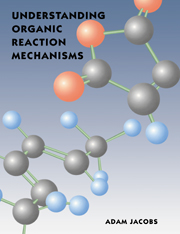Book contents
8 - How to suggest mechanisms
Published online by Cambridge University Press: 05 June 2012
Summary
A common question in undergraduate examinations is ‘suggest a mechanism for the following reaction’, followed by some unfamiliar and frequently rather daunting reaction. The purpose of this chapter is to guide you through the thought processes required for this task.
Suggesting mechanisms for an unknown reaction may seem scary at first, but there are in fact a number of questions you can ask yourself about any reaction that should lead to the mechanism. In this chapter we will look at the clues that can help you to suggest a plausible mechanism, and we shall study some examples of how these clues can be used in practice.
Introduction
Being able to suggest sensible mechanisms for reactions is useful not only in exams, but frequently in ‘real-life’ chemistry as well. A chemist may carry out a reaction with the intention of effecting a particular transformation only to find that something completely unexpected happens. This unexpected reaction may prove to be synthetically useful in its own right and the chemist may wish to develop it further, but in any case he or she will probably still wish to carry out the transformation originally intended. A knowledge of the mechanism of this new reaction will frequently be of invaluable assistance for either of these purposes.
We saw in the last chapter that we can never be certain of a reaction mechanism, although some reactions can be specified with far more precision than others. This should be borne in mind when attempting to suggest a mechanism for a reaction on paper.
- Type
- Chapter
- Information
- Understanding Organic Reaction Mechanisms , pp. 228 - 246Publisher: Cambridge University PressPrint publication year: 1997



